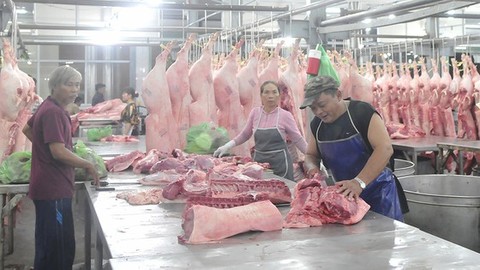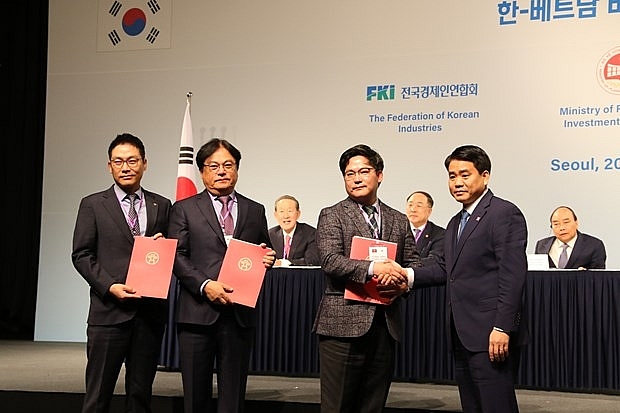Pork price pushes up November CPI
Pork price pushes up November CPI
The Consumer Price Index (CPI) of this month increased by 0.96 per cent compared to last month, the highest level for November’s CPI in the last nine years. 
The General Statistics Office (GSO) attributed it to the rising price of pork and pork products after the declining supply caused by the African swine fever crisis.
The total number of culled pigs was nearly 5,900,000 with a total weight of 335,700 tonnes by November 15, the GSO said.
The domestic gas price increased by VND3,500 (US$0.15) per 12-kilogramme canister from the beginning of this month, 0.99 per cent higher than that of last month due to the world gas price increasing by $10 per tonne to $437.5 per tonne.
However, the average of the 11 months increased by only 2.57 per cent compared to the same period last year, the lowest growth rate in the last three years.
This month’s CPI is also reported to increase 3.52 per cent compared to the same period last year.
Nine of 11 groups of consumer goods and services have seen prices rise over the last month, said Do Thi Ngoc, director of GSO’s CPI department.
These include food and catering services; beverages and tobacco; other commodities and services; housing and construction materials; clothing, hats and footwear; household appliances; medicines and healthcare services; education; and culture, entertainment and tourism.
Two groups of goods witnessing declines included transport and post and telecommunications.
In addition, the adjustment of petrol and oil prices by 1.7 per cent lower this month also curbed the general growth of CPI by about 0.07 percentage points.
The domestic gold price this month also declined 0.63 per cent compared to last month on the falling global gold price.
At the same time, the value of the US dollar also dropped by 0.13 per cent on plentiful domestic reserve foreign currency and the influence of the US-China trade war.
The average inflation of 11 months climbed 1.94 per cent compared to the same period last year.
The growth rate of inflation was lower than CPI, demonstrating a stable currency management policy, Ngoc said.















